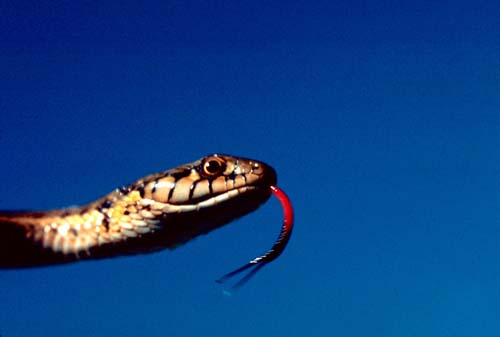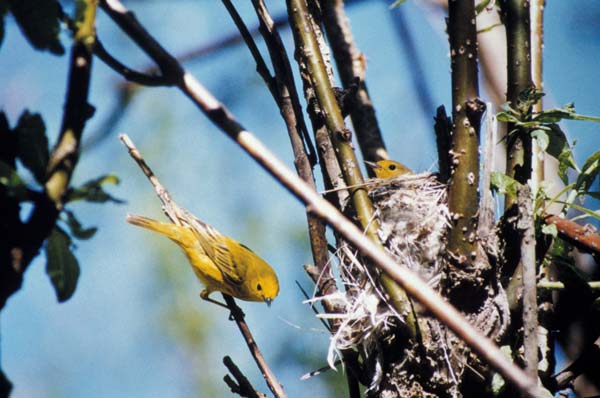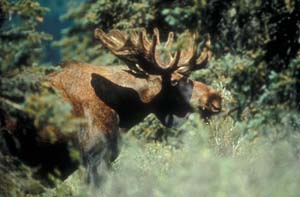A Laysan albatross named Wisdom is the oldest bird in the United States, and in North America, according to a US Geological Survey press release. The bird is at least 60 years old. It was banded while sitting on an egg in 1956, and was at that time estimated to be five years old. The bird was recently spotted at Midway Atoll National Wildlife Refuge. It has been spotted there several times in the last few years.
Author Archives: MadelineBodin
How dense do coyotes get?
The pack density of urban coyotes can be high, says a paper in the current issue of American Midland Naturalist. As part of a long-term study of coyotes in Massachusetts, the researchers observed that a pack of coyotes north of Boston was able to survive in a particularly small territory. The pack, they say, was of average size for the region: four coyotes in winter, six to seven in summer. But the pack occupied just two square kilometers. Read more here.
Find a free version of the paper here.
Eastern cougar declared extinct
The US Fish and Wildlife Service has declared the Eastern cougar subspecies extinct. The declaration was part of an Endangered Species Act (ESA) review. Next, the Service will propose that the Eastern cougar be removed from the federal endangered species list because extinct species are not covered under the ESA. The designation does not include the Florida panther, which is considered another subspecies.
The designation Eastern cougar refers to the subspecies that once ranged from Maine to South Carolina, and west to Michigan down through Tennessee.
The straight-up news coverage, including all the details on the various subspecies and extirpation-versus-extinction, can be found in The New York Times, National Public Radio, CNN, and Reuters. It’s served up with a twist of Thoreau in the Boston Globe. And the Canadians say it just ain’t so in this article from the Montreal Gazette.
The US Fish and Wildlife press release came from Region 5.
Photo: Not an Eastern cougar, but another, unknown, P. concolor subspecies.
Box turtle data bonanza
 |
| Courtesy of US Fish and Wildlife |
The current issue of American Midland Naturalist has three papers on turtles, and two on eastern box turtles. The first box turtle (Terrapene carolina) paper examined the clutch size and clutch frequency of box turtles at the Wertheim National Wildlife Refuge on eastern Long Island, NY. The researchers X-rayed the turtles they hand-captured. About 40 percent of the females captured were found to have eggs.
The big surprise for the researchers was that the average clutch size was 4.1 eggs. A previous study conducted in Connecticut (just across Long Island Sound from the research site) was 6.7 eggs/clutch. Yet another study in Maryland reported an average clutch size of 4.6. The Long Island study also found that clutch size did not appear to be related to body size in any statistically significant way. The authors suggest that clutch size may have more to do with specific local conditions than general geographic location.
Another surprise was that 95 percent of the turtle eggs survived at nests protected against predators, suggesting that egg predators play a big role in the population dynamics of eastern box turtles. You can find the paper here.
In the second paper, Indiana researchers radio-tagged box turtles and followed them for two years. They found that 96.2 percent of the turtles they tracked survived annually. Winter survival was lower than survival through the months of the year when the turtles were active (95.6 versus 96.7). Get more information from the paper, here.
Mobilizing citizens
 Galaxy Zoo is a series of citizen scientist astronomy projects that unleashed 375,000 volunteers on a database of galaxy images. The original project sought to categorize the shape of one million galaxies. So far 200 million images have been categorized. The project received a lot of media attention, which helped boost participation.
Galaxy Zoo is a series of citizen scientist astronomy projects that unleashed 375,000 volunteers on a database of galaxy images. The original project sought to categorize the shape of one million galaxies. So far 200 million images have been categorized. The project received a lot of media attention, which helped boost participation.
There were stories in Time Magazine, National Public Radio, Wired Science, The New York Times, and many other outlets.
Last week at the AAAS (American Association for the Advancement of Science) conference, Galaxy Zoo founder Chris Lintott offered other scientists tips on how to mobilize their own armies of citizen scientists. Some of the advice included: make sure your interface is bulletproof and offer tools for advanced users. More from the presentation is here.
Not included in the AAAS news story: make it easy, make it fun, and return those phone calls and e-mails from the media. But you already knew that.
Image credit: NASA/JPL-Caltech/ESA/Harvard-Smithsonian CfA
Grassland predators
 |
| Photo courtesy US Fish & Wildlife |
Nestling diet study woes
 Researchers saw an adult Abert’s towhee throw two nestlings out of its nest after the researchers had collared the nestlings’ throats as a part of a study of the nestlings’ diet. The researchers also observed yellow- chats retrieving food from their nestlings after throat ligatures were applied. The researchers had no problem getting food samples from song sparrow nestlings with throat ligatures.
Researchers saw an adult Abert’s towhee throw two nestlings out of its nest after the researchers had collared the nestlings’ throats as a part of a study of the nestlings’ diet. The researchers also observed yellow- chats retrieving food from their nestlings after throat ligatures were applied. The researchers had no problem getting food samples from song sparrow nestlings with throat ligatures.“Bad dog!”
 Feral dogs and dogs running loose threaten wildlife by killing them, stressing them, and passing along diseases. You knew that. This paper in the journal BioScience has the data, and some solutions. Mostly it’s a good resource if you need a quick review of the dog issue.
Feral dogs and dogs running loose threaten wildlife by killing them, stressing them, and passing along diseases. You knew that. This paper in the journal BioScience has the data, and some solutions. Mostly it’s a good resource if you need a quick review of the dog issue.
The BioScience paper also received coverage in the popular press. Read a sampling here:
Reuters/Mother Nature Network
Yahoo! News
Red Orbit
This article in High Country News from three years ago really brings the issue to life.
Non-native tree kills moose in Alaska
 |
|
| US Fish & Wildlife Service |
Three moose in Anchorage, Alaska are dead after eating buds, branches or berries from European bird cherry trees (Prunus padus). In one case a moose ate branches that had been pruned in the fall and stored under a deck. One of the moose also ate a toxic amount of Japanese yew branches.
European bird cherry, also known as mayday tree, May Day tree, or hagberry, is considered invasive along streams in both Anchorage and Fairbanks, Alaska. The tree is native to northern Europe and closely resembles native chokecherry trees. In the two Alaskan cities, European bird cherry is changing the mix of plant species in riverside ecosystems. Typically, moose do not browse the tree, allowing the non-native tree to dominate the native species that the moose do eat. The tree has also naturalized in Illinois, New York, New Jersey, Pennsylvania, Delaware, Ontario, and New Brunswick
No one is sure why the moose ate the trees now, when they usually don’t, or why the trees proved so toxic, since the level of toxins in the tree can vary. The only unusual event noted was a mid-winter thaw.
For the full story in the Anchorage Daily News, click here.
For a PDF backgrounder on Prunus padus from the National Park Service, including lots of photos of flowers and fruits, click here, and get ready to download the file.
Stopover or staging area?
 A stopover site is any site where one bird or many stops to rest or feed during migration, says a paper in the current issue of the Journal of Avian Biology. The term “staging area” should be reserved for “sites with abundant, predictable food resources where birds prepare for an energetic challenge (usually a long flight over a barrier such as an ocean or a desert)” the author says.
A stopover site is any site where one bird or many stops to rest or feed during migration, says a paper in the current issue of the Journal of Avian Biology. The term “staging area” should be reserved for “sites with abundant, predictable food resources where birds prepare for an energetic challenge (usually a long flight over a barrier such as an ocean or a desert)” the author says.
Read more from the paper in the Journal of Avian Biology here.
